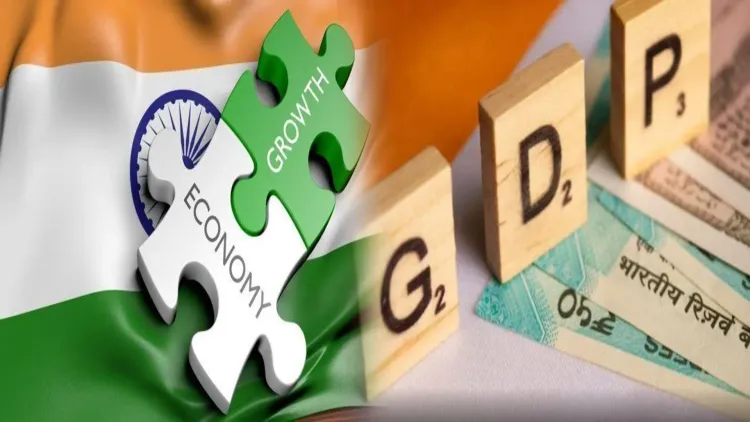Has Morgan Stanley Increased India's GDP Growth Projections to 6.2% for FY26 and 6.5% for FY27?

Synopsis
Morgan Stanley has raised India's GDP growth forecasts, now projecting 6.2% for FY26 and 6.5% for FY27. This upgrade hinges on strong domestic demand, even as external uncertainties loom. With ongoing policy support and an anticipated recovery in consumption, India’s economic outlook appears promising.
Key Takeaways
- Morgan Stanley has increased India's GDP growth forecast to 6.2% for FY26 and 6.5% for FY27.
- Domestic demand is expected to be the main growth driver.
- Continued policy support includes easier monetary and fiscal measures.
- Inflation is projected to remain below 4%.
- Public and household capex are expected to drive investment growth.
New Delhi, May 21 (NationPress) Global financial powerhouse Morgan Stanley announced on Wednesday an upgrade to its GDP growth forecast for India, projecting a growth rate of 6.2 percent for FY26 and 6.5 percent for FY27. This revision highlights that trends in domestic demand will be pivotal in driving the country’s growth trajectory, despite ongoing uncertainties on the international front.
The previous growth estimates stood at 6.1 percent for FY26 and 6.3 percent for FY27.
“We predict that growth will remain resilient, bolstered by robust domestic demand in the face of external uncertainties,” the global brokerage noted.
“Continued policy support is expected through a more accommodating monetary policy, alongside a fiscal policy that emphasizes capital expenditure. We foresee macroeconomic stability remaining within a comfortable range, supported by strong buffers,” it added.
The brokerage indicated that the recovery in consumption is likely to broaden, with urban demand on the rise and strong levels of rural consumption already evident.
“In terms of investments, we anticipate that public and household capital expenditures will drive growth, while private corporate investments are expected to recover gradually,” it observed.
Morgan Stanley also predicts that headline inflation will stay muted due to lower food prices and stable core inflation trends.
The forecast from the Indian Meteorological Department (IMD) predicting an above-normal monsoon for 2025 could positively influence the cropping season, aiding in the accumulation of healthy buffer stocks and helping to keep food prices in check.
“Consequently, we foresee inflation remaining significantly below the 4 percent mark over the upcoming months, averaging 4 percent (year-on-year) in FY26 and 4.1 percent in FY27,” the note stated.
Furthermore, the report anticipates that the Reserve Bank of India (RBI) will engage in a more aggressive easing cycle in response to slower growth while keeping inflation in check.
“We project a total easing of 100 basis points, including two additional rate cuts of 25 basis points each during this cycle,” the brokerage remarked.
Additionally, it expects the RBI to continue easing through various liquidity and regulatory measures.
“On the fiscal policy side, we anticipate the consolidation strategy outlined in the Budget will be upheld, with a focus on increasing capital expenditures,” the note indicated.
The outlook for growth remains balanced, amid an improving scenario for international trade agreements. Positively, an uptick in U.S. growth, coupled with a quicker resolution of trade and tariff uncertainties, could enhance investor confidence and invigorate the capex cycle.





